This is the report of a workshop held in Newfoundland and Labrador April 7-9, 2014, on the topic of the Global Slave Trade in Newfoundland and Labrador. The conference was sponsored by the Newfoundland and Labrador Coalition Against Human Trafficking Inc.
In keeping with the coalition’s mandate, the objective of the conference was to educate and inform the community about human trafficking and identify the partnerships that are essential to address this modern day form of slavery. The audience targeted for this event included: law enforcement personnel; government and non-government agencies and departments-social workers, victim services, prosecutors, policy advisors, front-line health care workers- sexual assault nurses; community- based organizations; and faith communities.
Approximately 110 participated in the conference, including guest speakers, presenters and planning committee members. The gathering of this many people, representing a multitude of organizations, is a testament to the timeliness and interest in human trafficking in this province.
CONFERENCE PREPARATION:
The Global Slave Trade in NL is a project of the NL Coalition Against Human Trafficking Inc. Work began on the conference a year before with the formation of a Planning Committee of representatives from the Coalition. Their tireless efforts contributed greatly to the success of the conference and brought the dream of the conference to a reality.
Members of the Planning Committee were:
-
Dolly Sweetapple, Eastern Area Director/Provincial Liaison,The Salvation Army NL Division Correctional & Justice Services
-
Lil Simms, BSW, Community Representative
-
Sister Margie Taylor, RSM-Sisters of Mercy
-
Sister Emma Rooney, Presentation Sisters
-
Sister Mary Tee, RSM, Coordinator – Mercy Centre for Ecology and Justice
-
Constable Monica Murphy, Royal Newfoundland Constabulary – Criminal Intelligence Services of Newfoundland and Labrador
-
Sharon Snow, Marketing and Communications
-
Frances Ennis-Conference Facilitator
The Conference Planning Committee developed an agenda that identified the face of human trafficking and provided education around the indicators as well as training for law enforcement /investigators on the front line. Accordingly, presenters were invited from the United States,
Ontario (Canada), Newfoundland and Labrador. The event was intended to begin the process towards the collaborative development of human trafficking response network in our community.
The conference opened with greetings from various provincial members of government. Each person wished the participants well with the hope that the following two days would provide education and collaboration among the various groups assembled for the conference. The one
disappointing feature of this part of the conference was none of the government officials participated in the conference. Their presence would have provided an opportunity for them to gain knowledge re the issue of human trafficking.
KEYNOTE ADDRESS: HONOURABLE JOY SMITH, MEMBER of PARLIAMENT
OTTAWA ONTARIO CANADA
The keynote speaker for the conference was Honourable Joy Smith, Member of Parliament for Ottawa, Ontario, Canada. In her presentation, the Honourable Joy Smith shared her personal involvement in the issue of human trafficking. Her involvement began with her son who was a member of the Royal Canadian Mounted Police. He became an investigator for child pornography. She talked about the human connection and recounted some of her son’s experience as an investigator and the impact it had on him. Joy began working with victims and her whole life changed as she listened to their stories. The first victim she met was 14 years old. She was found handcuffed to a bed, where she was left to service men. Joy’s own words were “Burned in my memory is her hand with long delicate fingers.”
Honourable Smith noted there are two forms of human trafficking that exist in Canada: Forced Labour which includes nannies, live-in care givers; agricultural or construction workers; and Sex Trafficking including prostitution, massage parlours and stripping. Human trafficking is the number one organized crime.
Joy cited stats from 2008-2014 in Canada indicating numbers of those trafficked, number of pimps arrested and the length of their convictions as well as the multiple agencies involved in some cases. One recent project dated from 2013-2014 was known as Project Home for Christmas. It was the intent of police officials to have girls returned to their homes by Christmas. In this case there were 10 arrests with perpetrators facing 95 charges. Most of the girls were from Canada and 30 percent were under 18 years of age.
Researcher and Police investigators have shown “hot spots” commonly used to traffic girls: In Canada they are: Halifax, Montreal, Toronto, Niagara, Vancouver, Edmonton, Calgary, Winnipeg, Thunder Bay. Las Vegas and Florida are common destinations for girls trafficked from Canada.
Ms. Smith noted that ensuring swift and certain punishment for traffickers is essential for the protection and rehabilitation of victims. The following are some initiatives she has taken as a politician:
Bill C-268: Child Trafficking Offence in 2009
Prior to this bill Canada had no specific penalties for child trafficking. This bill proposed mandatory minimum sentences for trafficking a minor.
Bill C-310 in 2011
Allows Canada to prosecute Canadians or permanent residents who travel abroad and engage in human trafficking.
Proposed a National Action Plan to Combat Human Trafficking:
This national action plan included recommendations under the following sections of prevention, protection, prosecution, partnerships. A budget of $ 25 million over 4 years was also included as part of the plan.
Ms. Smith spoke of the challenges which still face countries in the fight against sex trafficking. The legislation that has legalized and regulated prostitution has seen sexual exploitation, human trafficking and violence towards women and youth increase drastically. In contrast, countries which have supported the Nordic Model of prostitution have seen a marked decrease in street prostitution and sex trafficking. This model operates from the premise that prostitution is exploitative and not a business. It adheres to the criminalization of johns and pimps who exploit prostitutes and to the decriminalization of prostitutes/trafficked victims. Countries who have adopted the Nordic Model include Sweden, Norway, Iceland, Israel, France, European Union.
In her concluding remarks, Honourable Smith spoke of the need for continued education for ourselves and others in agencies, schools, churches, etc. She addressed the need of men being a positive role to younger men. Her closing remarks were ADVOCATE and WORK TOGETHER!
FIRST GUEST SPEAKER: LAURA WINTERS PhD Candidate for the University of New Brunswick ( Canada)
Topic: Trafficking, Stigma, and Agency: Lessons from the International Stage and Cautions from the Local Scene
In this presentation, Laura highlighted the marginalization of sex workers and explored stigma as it relates to their human rights. She also provided an overview of international literature around human trafficking. She talked about the types of advertisements used by the “helping industry” which, though well intended, often serve to re-victimize. Laura concluded by outlining how this information is relevant for our local situation and what lessons we can learn from the global piece to help address our unique challenges in Newfoundland and Labrador.
Initially Laura presented definitions to differentiate between sex work, sexual exploitation and human trafficking. Ms. Winters felt it was important to note that sex work happens without exploitation. We must listen to what people with experience have to say about their needs to ensure a safe working environment for them.
Language is a critical factor in how we view sex workers and how they absorb or internalize society’s view of their work. The word prostitute, for example, is loaded with biases and prejudices, and our notions that “fixing” is needed and what that fixing should look like.
Child prostitution implies the person had or has some control over the situation. It is in fact, sexual exploitation. Confusing sex work and trafficking will have a negative impact on the value
of public policy because all people are grouped with the same experience. Each person’s needs are unique. Yet all are under the same umbrella. What is lost with this approach is an understanding and appreciation of what it means to be a victim. Victims are exploited and exploitation means no control, no choice.
Laura continued her presentation by addressing the issue of social stigma/prejudice. Social stigma is the extreme disapproval with a person or group on socially characteristic grounds that are perceived and serve to distinguish them from other members of society. Putting labels on people does not serve them well because our labels are laden with our view of what the word(s) mean. In labelling people we can and often do re-victimize them. People especially feel the weight of stigma when they engage in sex for money.
Ms. Winters then asked how this issue has been framed internationally? In answer to this question she spoke of how advertisements are all about shock value…even ones from organizations who aim to address issues of victimization and exploitation. We need to think about what these ads say, how they portray women and recognize that many are mildly pornographic. These types of ads and posters can create more problems for victims because they objectify women and give negative messages. Laura showed a number of slides on her power point where women were jammed into a meat tray with the words ” pieces of fresh meat” written below the slides. While there is definitely ” shock” value to such an ad, these types of ads can be harmful. Such ads are generally erotic.
Laura commented on how none of the women who participated in her research wanted to be saved, nor did they see themselves as victims. She spoke of the need to include empowerment as a major piece of her work because without it, we move to “rescue ministry” to change “their” life. “In doing my research,” said Ms. Winters, “I was often made to feel as if there was something morally wrong with the work I was doing, which made me feel like crap. Imagine what sex workers would feel like.”
Too many people directly affected are not consulted. We need to continually ask in our work: how do we best represent sex workers? We need to find ways to hear the voice of sex workers. We must also remember that people are much more than their “sex” related stories and we should not reduce them to a single entity. Victims need to be treated as people, to be loved and accepted as part of society.
Laura spoke to the issue of decriminalization and how sex workers have identified some problems to their safety with the offences that were struck down by the Supreme Court of Canada and scheduled to be enacted in new laws in December 2014. The offence that prohibits working out of a bawdy house and communicating in a public space for the purpose of engaging in prostitution offers less protection for women, more potential harm and outright physical danger. These are very real concerns expressed by sex workers. It is not enough to have a “good heart” but next it is important to talk to those exploited to find out from them what will/will not work for them. The real experts are those who have been through it.
Laura offered some suggestions of how we can proceed locally. Some ideas were:
*Work out of the harm reduction approach.
*Recognize that experiential voices need to be at the table to be part of making policy and creating supportive services.
*Separate sex work and trafficking as the needs are different.
*Work on stigma reduction through education and awareness.
*Listen to people who are involved; celebrate them for the people they are, not for their story.
*Continue to do research on the issue with people who are directly involved.
Participants felt Laura held a great perspective on local issues and were pleased that her experience of working with sex trade workers resulted in her displaying great sensitivity to them.
SECOND GUEST SPEAKER: CONSTABLE LEPA JANKOVIC PROJECT OPAPA-INTERNATIONAL HUMAN TRAFFICKING
Serious and Organized Crime Unit Hamilton-Niagara RCMP
Constable Lepa Jankovic was a captivating speaker; she was very passionate about her topic thus making for a very entertaining presentation. She was the lead investigator for the International Human Trafficking Project OPAPA, which has become known as the largest human trafficking investigation in Canada.
Prior to her police work, Lepa worked as a bartender. Here she was referred to as the “undercover cop.” She felt this job wasn’t for her when she was asked to train 20 Ukraine women as strippers. It was then Lepa decided to become a police officer.
Project OPAPA involved 23 male victims who were exploited in the labour industry. They came from Oppa, a small village in Hungary. The traffickers were from the same country. The victims were lured with the promise of good employment, good wages and paid travel costs to Canada.
The men in Hungary met up with men who assured them of a good job in Canada. They received passports and were given a letter of invitation to enter Canada. In Canada the traffickers met the men at the airport and took their papers. The Royal Canadian Mounted Police got a call to say a lot of men were going in and out of the same addresses. The victims were working on a construction site. They lived in the basement of the trafficker’s homes where they slept on mattresses on the floors. They were not allowed to leave, had no access to telephones and were subject to threats of violence. The traffickers seized all benefits from false social assistance claims and bank accounts.
Constable Jankovic acted on a hunch that something illegal was underway through making connection with victims, gaining their trust, building the case, obtaining the search warrant , issuing the detention order and pressing charges. Thirty-one suspects were charged, and 13 of them pleaded guilty to participating in an organized crime group for the purpose of trafficking in persons. The others plead guilty to various charges such as organized crime for the purpose of fraud and theft. The Kingpin was handed Canada’s largest sentence for human trafficking -9 years in prison. Clearly, from beginning to the end of this case, Constable Jankovik was committed, tenacious and determined to see that justice was served.
Throughout her presentation Lepa addressed questions that are often posed by the general public, within law enforcement agencies, and among the judiciary. The first question is usually, why didn’t they leave? The answers are as varied as the victims. However, there are and were similarities that created significant barriers to their opportunities and possibilities for leaving the situation: no documentation, no trust in police, language barrier, threats, no money, don’t know anyone except traffickers, threats to family back home, vulnerability and humility.
You can’t force people to stop working in the area of human trafficking, but you can recognize and be attentive to their needs. Some of these needs include: availability of translators, finding an alternate and safe place to live, close old and open new bank accounts, obtain legitimate provincial assistance, assist people with immigration concerns, address health issues, connect victims with their families, build a relationship of trust and faith, be on call 24/7, know the law.
Lepa’s presentation demonstrated a perseverance and a commitment in pursuing this case. She was an amazing engaging speaker who dealt with this situation in a hands-on manner.
THIRD GUEST SPEAKER: ANGELA CROCKWELL
Executive Director of Thrive
St. John’s, Newfoundland Canada
In her presentation, Angela set out to provide an understanding of the local context for sex exploitation, sex trade and human trafficking. She used the content of two videos to provide insights into the lives of young people who have experiences of sexual exploitation and human trafficking. Angela made reference to a coalition named CASEY (Coalition Against the Sexual Exploitation of Youth) which is working to address the issue of sexual exploitation of young people. As well participants viewed a video produced by Girls Education and Mentoring.
Services (GEMS) out of New York City.
Member groups of CASEY recognize the need to provide ongoing training for people in their agencies, the importance of working together to address the issue of youth sexual exploitation plus the need for a deep commitment on behalf of people in their organization.
Ms. Crockwell noted the importance of language, especially when we are talking about children and youth. We have to stop using such words as prostitution as it conjures up very negative things for victims and about victims.
In the next section of her presentation, Angela addressed some of the risk factors that put youth more at risk of becoming victims of sexual exploitation. These include: lived experience of child sexual abuse, leaving home at an early age, unaddressed trauma, substance abuse in the home, poverty, dropping out of school.
Participants viewed the VIDEO: MAKING OF A GIRL which provided factual information about sexual exploitation, how young girls are lured and groomed for sexual exploitation and what that can look like in any place in any city. This video provided an example of how the ” story” overshadows “the person” who has lived the experience. Girls have to give up many things family life, education, social life etc. when they are victims of sexual exploitation. There can be pluses-new clothes, the fast life, a sense of community etc.
In concluding her presentation, Ms. Crockwell reviewed two handouts that provided tips for people who work with youth who have lived experiences of sexual exploitation.
*Put into practice your knowledge of risk factors and techniques for victim identification.
* Don’t rely on stereotypes to identify or engage with sexually exploited children.
*Do provide a safe place for engagement.
* Don’t question or engage a sexually exploited child at a location where they feel threatened or unsafe.
* Be non- judgemental. Don ‘t react verbally or physically. Pay attention to your body language. Face the child and make eye contact. Show empathy and understanding.
* Do work to build trust with the child.
* Do not use intimidation tactics with the child.
*Do keep physical contact to a minimum. Physical contact as a comforting response should be initiated by the child.
Youth themselves are in good position to indicate interventions and interactions that were effective when they were struggling with leaving the commercial sex industry. They felt they could talk confidentially to their counsellors; sometimes they found cops, lawyers, and judges who were interested in them; nurses and doctors were very supportive. Sometimes there was difficulty in finding a space or youth program that answered their needs.
Participants felt Angela displayed great wisdom and dedication in her work with youth as well as a tremendous respect for youth who are at risk.
THIRD GUEST SPEAKER : DEPUTY ELIZABETH. FILDES, BS, MS
Program Director, Human Trafficking Division Erie County Sheriff’s Office
This session was designated as a training session for participants. Deputy Fildes set out to provide a clear definition of human trafficking and the elements of this crime. She gave examples of human trafficking and how it occurs in our communities. Finally she spoke about new trends and red flag indicators of human trafficking that can assist law enforcement and non government organizations to combat this crime.
Deputy Fildes provided some background information about herself. She has been a Deputy Sheriff for 32.5 years. Within that time frame she has rescued over 450 victims in 138 different situations of human trafficking including labour, domestic and international. At one point she worked on a case where a Judge and Deputies were serviced by victims who were trafficked for sex. She spoke of the fear she experienced in having to tell on men working in the department!
Elizabeth addressed the issue of how sex trafficking thrives everywhere in the world because of the DEMAND. It also thrives because it is part of “the silent culture” where society looks at sex trafficked victims as prostitutes and not as victims. There is stigma.
Three elements are necessary to meet human trafficking:
1. Process Action involving recruiting, harbouring, moving or obtaining a person.
2. Particular Means including force, fraud, coercion
3. For the purpose of involuntary, debt bondage, slavery, sexual exploitation.
Deputy Fildes spoke to each of these elements and then went on to the issue of building rapport and trust with victims. A cautionary note was used when she spoke of ensuring the case is victim centred not case centred. With no victim there is no case. Many victims have lost trust in law enforcement, but in the end they also want what we want.
Interviewing is a key component in any case. It is about asking the right questions and listening. You have to know when to talk, when to listen, and be able to back off when the interview is over. It is necessary to break out of character, and wear the right clothes. Our uniform can intimidate so use common sense. Never interview someone in front of another person. In the event that a person needs an interpreter, take the utmost care to ensure that the person is neutral in the case.
Understanding how trauma affects behaviour and memory is essential in the work with victims of human trafficking. Go slow. It takes time for the full story to unfold. Give triggers during the interview to help jog the person’s memory. Triggers can be valuable to assist in the gathering of information and also the healing process. Learn to pick up subtle signs. You have to approach victims so they feel safe.
Ultimately this is about victims. It is about helping them put together their story by making them feel comfortable and safe. Building rapport with victims is about learning how victims got where they are, and finding out where they want to go.
Participants felt Deputy Fildes was a charismatic and engaging presenter. The passion she had regarding this topic speaks volumes through her work.
ROUND TABLE DISCUSSIONS :
Constable Monica Murphy, Royal Newfoundland Constabulary
Corporal Greg Ford, Royal Canadian Mounted Police
Malin Enstrom, PhD Candidate (Criminology)
The purpose of this round table discussion was to build on the previous sessions by taking time to focus on how the things learned were applicable or could be better integrated into our local reality. Monica, Greg, and Malin each gave a brief presentation about the issue of human trafficking from their work related positions. As well, they noted the importance of continued work in this field and of moving forward through collaborative efforts among all who are involved.
Participants were then invited to discuss the following questions at their tables:
1. How are victims recruited and controlled?
2. What could we offer to potential victims prior to the reporting stage ?
3. Do you think Newfoundland and Labrador is susceptible to Human Trafficking?
Why? Why not?
REPORTS FROM TABLE DISCUSSION
Reporters for tables were designated. A great amount of discussion was generated through the use of the questions. Answers from the various tables were published in the report of the conference. Great collaboration and connections were made through this process.
Question # 1: Some ways victims are recruited and controlled:
Grooming
Providing drugs, gifts
Substance abuse
Peer recruiting
Loss of personal identification
Violence, intimidation
Physical control
Social media
No cell phone
Brainwashing
Question # 2: We can offer potential victims:
Emotional support
Basic needs such as food, clothing, funds
Active listening
Guidance
Trust
Non-judgemental interventions
Attend to medical needs
Referrals and/or contacts to Planned Parenthood/Thrive
Guarantee safety of person
Legal help
Question # 3: As a province we are susceptible to human trafficking:
Island location
Poverty-despite the prosperity of the oil
Influx of international people
Increase of cash
Increase of motor cycle gangs
Points of entry to the province are easy
There is reason to believe people are into human trafficking by way of force and coercion.
The underground sex culture is in just about every country.
Social media
Overall the conference was viewed as excellent. One key area noted was the fact there was no government representation even though the committee had sent invitations to these representatives.
FUTURE PLANS
Where from here?
During the course of the conference, participants were invited to complete evaluations after each session. As a result of these evaluations and conference discussions, the following action plan has been developed.
1. To provide a morning or afternoon session for the purpose of continuing the discussions initiated at the conference; a venue is currently being explored.
2. A sub-committee is being developed to provide training for the police. This initiative has been approved and training will be completed by June 2015.
3. A poster campaign will be established to provide posters in several languages for the purpose of possible domestic human trafficking victims.
4. A sub -committee will be formed to solicit funding from both provincial and federal governments to enable us to carry out these recommendations.
The hope was expressed that we need to move forward with a concrete plan of what we can do in the area of human trafficking. Let ‘s take answers/ results from discussion and use it for our benefit.
Let’s keep talking!






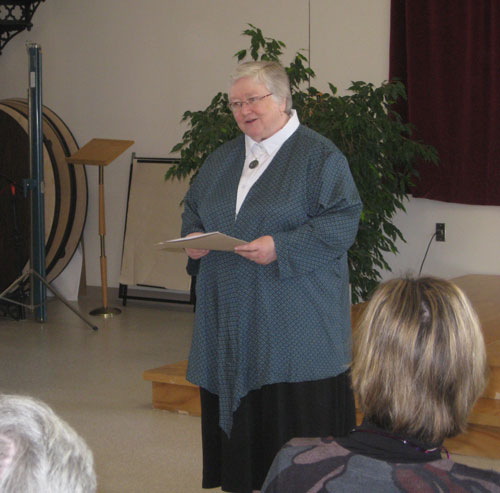
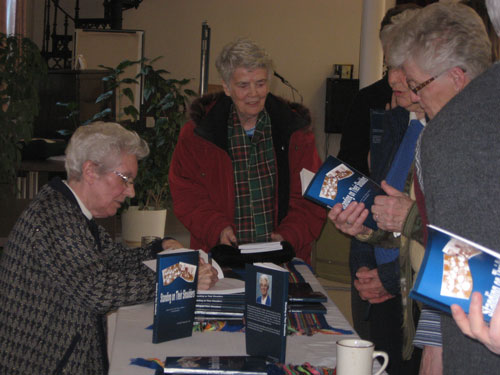
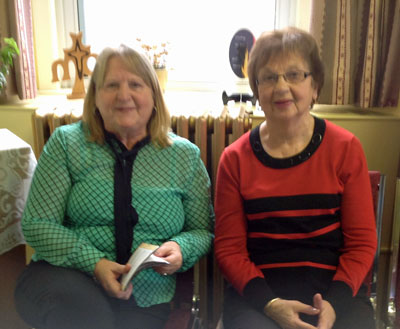
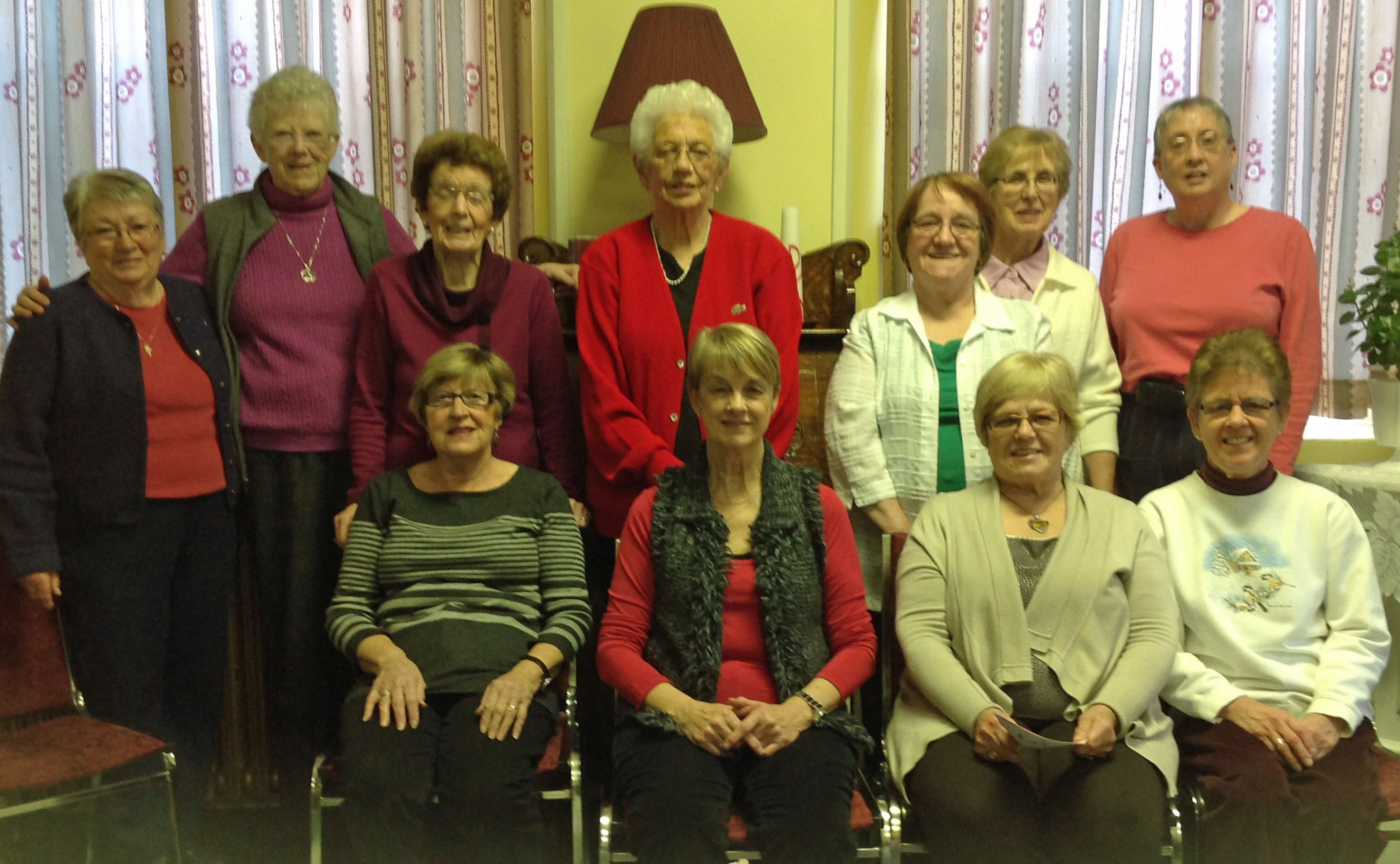
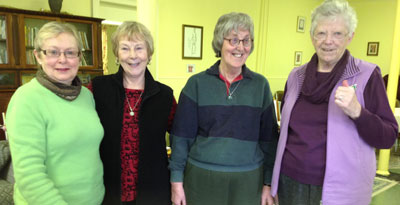
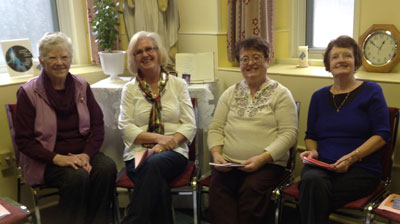
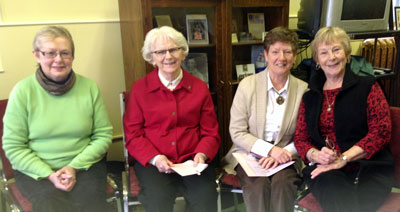
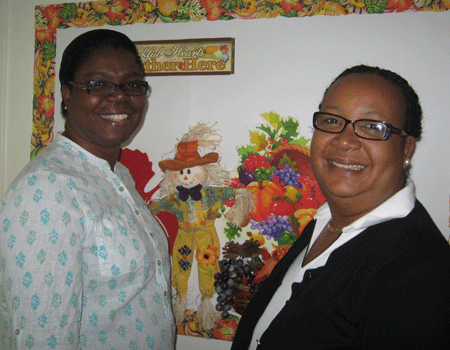 (McAuley Convent is residence of the Sisters of Mercy for members who need care or who convalesce from illness or injury.)
(McAuley Convent is residence of the Sisters of Mercy for members who need care or who convalesce from illness or injury.) 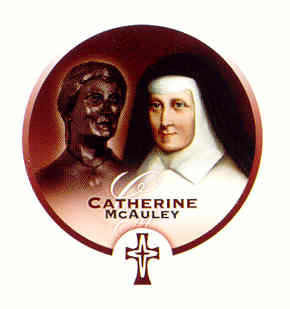
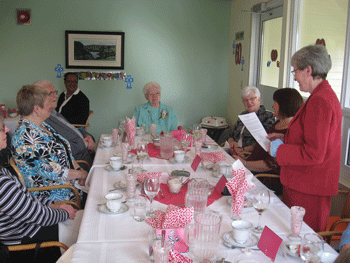
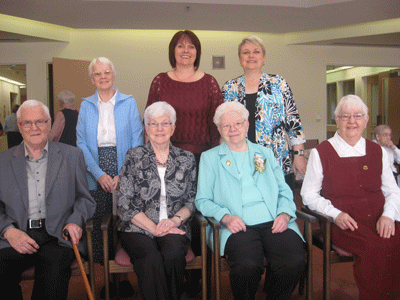
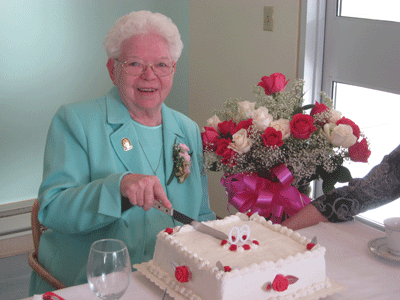
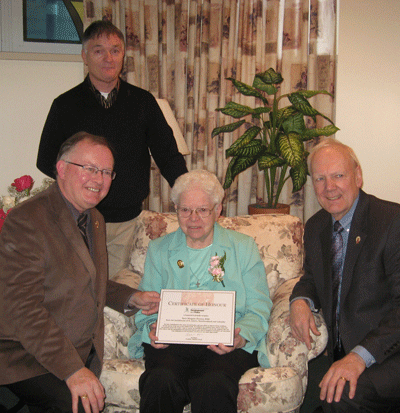
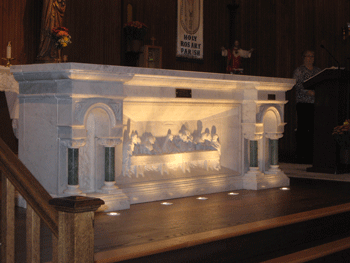 Also present for the event were many parishioners, Father Ray Earle, P.P. of Holy Rosary Parish, Father Geoff Kolonel, P.P. of St. Kevin’s Parish, Goulds, and Father Leo English, P.P. of St. Teresa’s Parish.
Also present for the event were many parishioners, Father Ray Earle, P.P. of Holy Rosary Parish, Father Geoff Kolonel, P.P. of St. Kevin’s Parish, Goulds, and Father Leo English, P.P. of St. Teresa’s Parish.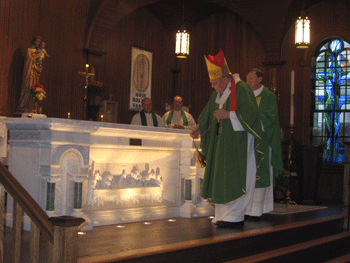 With the sale of St. Bride’s College, the altar was removed piece by piece and placed in storage at the Basilica awaiting a new home.
With the sale of St. Bride’s College, the altar was removed piece by piece and placed in storage at the Basilica awaiting a new home.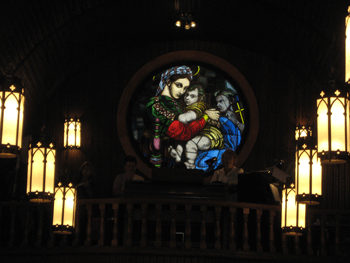 Before renovations were completed, Father Ray Earle was assigned pastor of Holy Rosary Parish and he and the committee finished the work. Many of our sisters who served on Leadership Teams since the 1960s prayed daily in front of this altar.
Before renovations were completed, Father Ray Earle was assigned pastor of Holy Rosary Parish and he and the committee finished the work. Many of our sisters who served on Leadership Teams since the 1960s prayed daily in front of this altar.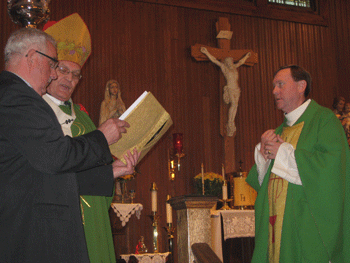 Many expressed their gratitude for the altar and promised to take care of it for us. We in turn stated how grateful we are that it has found such a beautiful home.
Many expressed their gratitude for the altar and promised to take care of it for us. We in turn stated how grateful we are that it has found such a beautiful home.